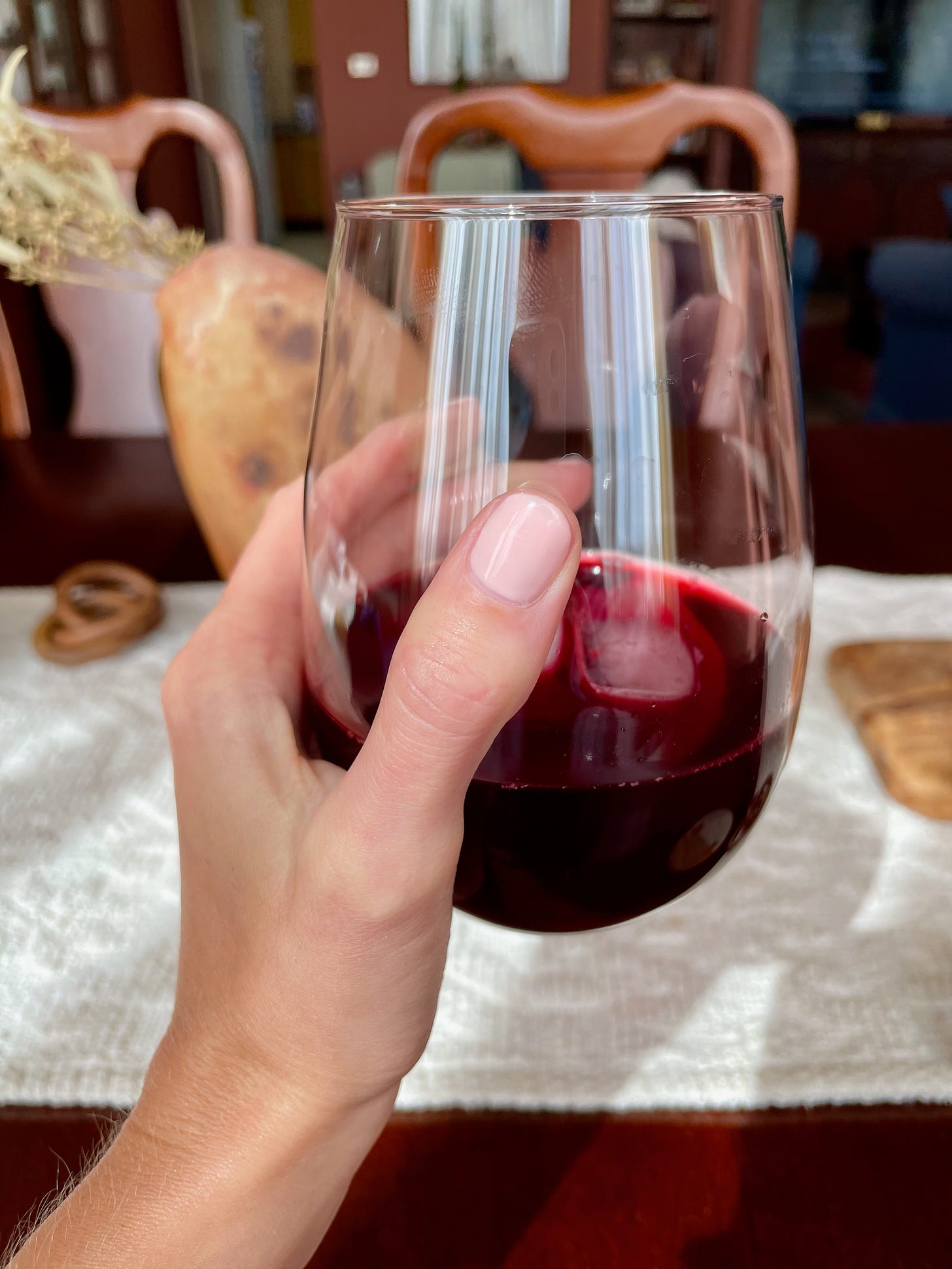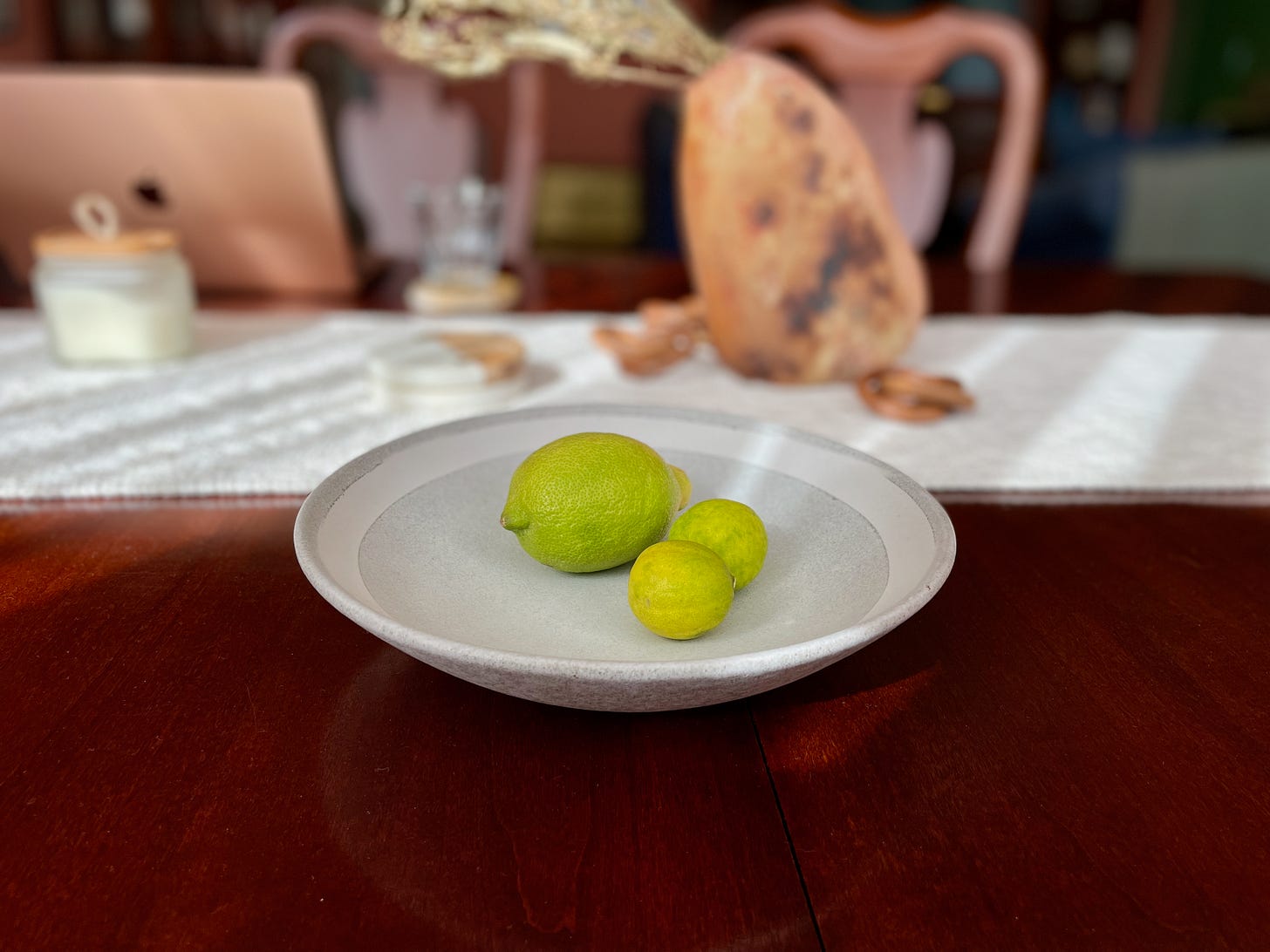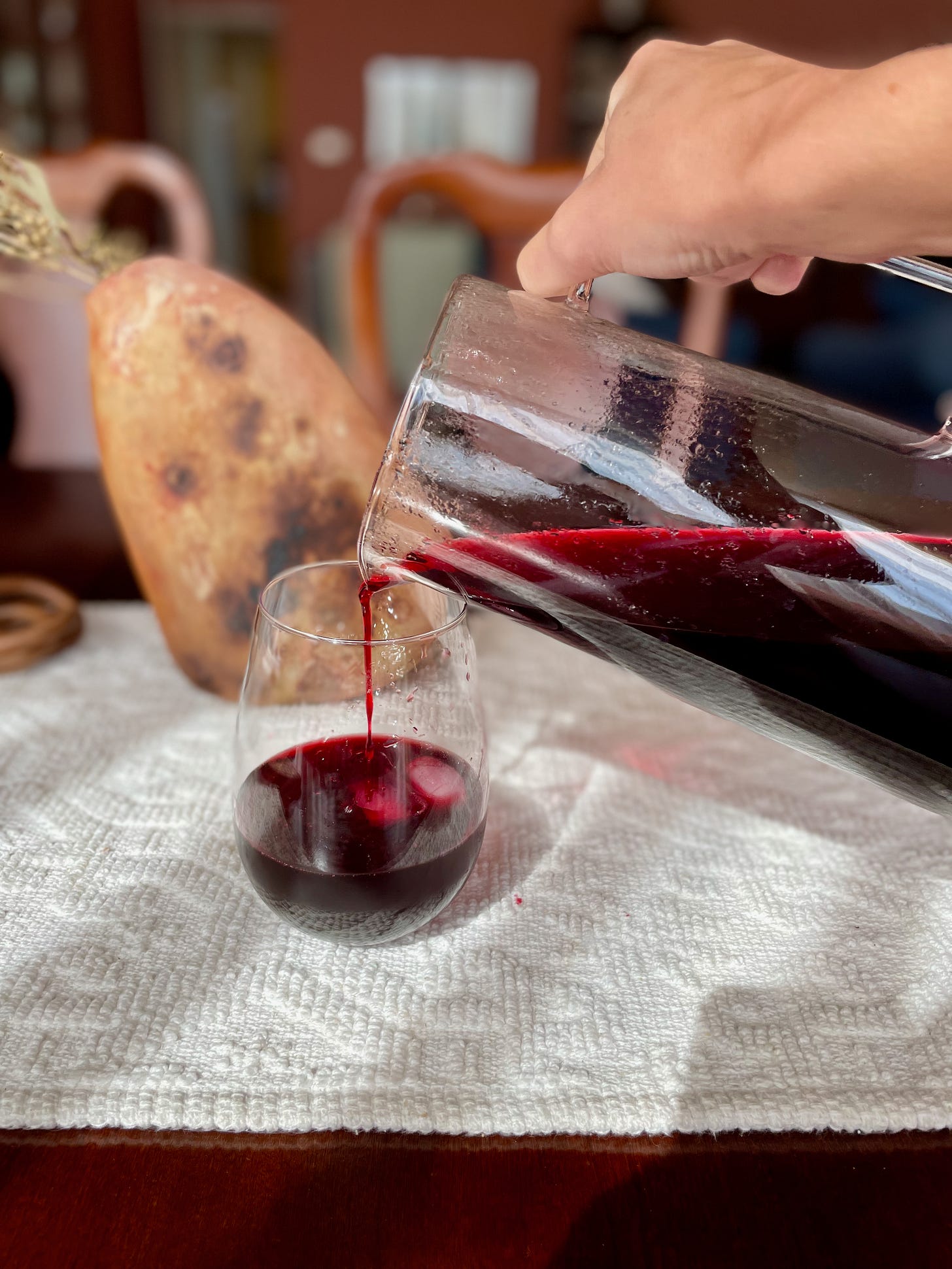Discovering Local Ingredients: A Screed About Citrus Fruits and An Ode to Hibiscus
+ a recipe for hibiscus tea and granita mix
Have I mentioned yet that it is very, very hot in Cairo?? Okay, it’s hot everywhere. But even when my thermostat says 101 Fahrenheit, I have a hard time believing it’s that balmy out. It feels like the surface of the sun.
In this heat, I am single-minded. All I care about is consuming cold things, so I’ve been making inordinate amounts of iced tea—which I then freeze into granita for dessert—with a couple local ingredients that were new to me when I moved here: baladi lemons and hibiscus flowers. (My recipe for hibiscus tea/granita mix is at the end of this post—click here to jump to the recipe if you don’t care about my thoughts on flowers and citrus!)
In Egypt, you can get pretty much anything that fits on the back of a motorcycle delivered in under an hour. You really have no reason to ever leave your house. Which is okay with me, because the humidity is currently so bad that water beads up on the outside of my clothes as soon as I step out my door—like, if I swipe my fingers over my pant leg, I can feel droplets on it. I won’t bother telling you what goes on inside my clothes when it’s this hot out. This is a family newsletter.
Consequently, I rarely set foot in grocery stores anymore, and instead use a delivery app called InstaShop to stock my kitchen with local produce. While InstaShop is great overall, I tend to end up with at least one item per order that isn’t exactly what I asked for. And that item is usually a citrus fruit.
This has led Nick and me to take a shotgun approach. We order every type of lemon and lime a given store carries and pray to the citrus gods that whatever we need shows up. Our neighborhood shopkeepers seem to play fast and loose with what they define as a lime vs. a lemon—and this is coming from a former Bushwick resident whose bodega used to label lemons as “yellow limes” and limes as “green lemons.”1 And the place was literally called Los Limónes!! But I digress.2 If I’m browsing InstaShop and click on a picture that says “lemons, Italy,” something that is obviously a lime shows up at my door. Or the reverse happens.
But by far my most common—and initially, most puzzling—citrus-purchasing experience is reaching into a grocery bag and pulling out not a lemon, not a lime, but a third thing: a small, round, greenish-yellowish fruit that I have never seen in the U.S.
Friends, let me introduce you to the baladi lemon—we have two in the front of this photo, plus a regular lime (I think…it has since started to turn yellow so I am not really sure? You understand my confusion now) for scale. Turns out these babies are arguably more delicious than either of their acerbic compatriots.
Baladi (which translates as something like “local,” “traditional,” or “indigenous”) lemons look almost like key limes. They are approximately golf-ball sized, have paper-thin skin, and range in color from deep green to light yellow. Their flavor is unique—a little lemon-y, a little lime-y, and somewhat delicate. A lot of people claim they’re less bitter than other lemons, but I don’t go around drinking raw lemon juice so I can’t independently verify. Oh, and they are extra juicy. These are the lemons used to make the famous lemon-mint drink served in every restaurant here.
The only drawback to cooking with baladi lemons is that their size makes them suboptimal for zesting (which is a real shame because I’m dying to make baladi lemon bars). But! They pair beautifully with hibiscus flowers, another of my favorite local ingredients.
Dried hibiscus—which is plentiful in Cairo—makes a tart, subtly floral tea that is best served cold. I went to an Egyptian cooking class recently where the chef brought a big cooler of chilled, sweet hibiscus tea, and I guzzled that stuff like a preschooler crushing Welch’s juice boxes. It was DELICIOUS and thirst-quenching and apparently offers several health benefits. Hibiscus tea is also an extremely fun color. It is a deep oxblood when fully steeped but then turns purply blue when you wash it off your dishes? What is not to love about this?? Naturally, I had to try making hibiscus tea at home.
Extracting the dried flowers is effortless; when you put them in water, the juice starts to seep out before you even add heat, like in this picture of a pot of tea on my unlit stove. (I even put it in a cute Dutch oven to make your experience more visually pleasing. You’re welcome.) But to get the richest infusion, it’s best to bring the water to a boil, remove from the heat, and leave the flowers to steep while the pot cools.
Those steps alone yield a nice tea, but in my humble opinion, hibiscus tastes best with some added sweetness and complexity. So what do we add? That’s right, BALADI LEMONS. I brought a pitcher of sweetened hibiscus tea with the juice of one baladi lemon to a breakfast get-together last week. It was a big hit, and the perfect way to round off a meal on a hot summer day.
But things got better still when I stumbled upon this piece in Time Travel Kitchen. As the lovely Jolene talked about how easy it is to make granita—basically a traditional Sicilian slushie—a lightbulb went off: I could whack any extra hibiscus tea in the freezer in the late afternoon and have a light, refreshing dessert ready by dinnertime.
So that’s exactly what I did. And it was superb. Fresh, tart, not overly sweet. Nick and I each shoveled multiple servings into our bowls. This is such an easy way to have homemade dessert on days too sweltering to turn on the oven—and since there are many of those in our future, these granitas are going to become a staple in our house.
The recipe for my hibiscus iced tea/granita mix is below. If you are in the U.S. and want to try this but can’t find loose dried hibiscus, I think you could get a similar result with tea bags (Davidson’s fills tea bags with pure dried hibiscus). If you do, please report back! You can also easily replicate the taste of the baladi lemon by adding the juice of half a lime—as much as I love baladi lemons, I don’t think the exact citrus fruit you use is all that important. So next time a random one arrives in my InstaShop order and I don’t know what to do with it, I’ll be adding it to hibiscus tea.
See you next week with another essay.
Hibiscus Iced Tea and Granita Mix
4 cups water
1 cup (about 23 grams) dried hibiscus flower (or equivalent number of tea bags filled with 100% dried hibiscus flower)
6 tablespoons sugar
Juice of 1 baladi lemon (or 1/2 a lime)
Put water in a pot or saucepan and add the hibiscus flowers.
Bring water and hibiscus to a low boil. Remove pot from heat.
While the mixture is still hot, add the sugar—6 tablespoons, or to taste—and stir until it dissolves.
When the mixture reaches room temperature, sift it into a pitcher, removing the flowers.
Stir in citrus juice.
Allow tea to cool and serve with ice. Store in a covered pitcher; keeps 4-5 days in the refrigerator.
IF MAKING GRANITA: chill a metal loaf pan in the freezer. Pour about 2 cups hibiscus tea into the pan and freeze. Check the pan every 20-30 minutes, raking with a fork as ice crystals form to prevent the liquid from freezing into a block. This will achieve a texture like shaved ice. Serve with whipped cream or sugar sprinkled on top, if desired. Makes about 4 small servings. Adapted from Domenica Marchetti’s blood orange and campari granita recipe—which I’ll eventually be trying, too!
Note: I have tried making the tea with a water to hibiscus ratio of 4:1 and 6:1. When I upped the water content, I did not notice much of a difference in the strength of flavor—until I froze half the batch for granita. So if you plan to make granita with your brew, I’d recommend using a 4:1 ratio. If you are reserving some to drink, you can always water it down later.
Probably because those are literal translations from Dominican Spanish? If anyone knows, please tell me in the comments!
Ok, one more story for this rant about mislabeled citrus fruits: Nick used to go to a fruit cart in Midtown Manhattan that labeled clementines as “calamities.” CALAMITIES!!!











🤣🤣 you are so welcome, Jolene! Glad you enjoyed reading about my silly citrus obsession, and thanks so much in advance for the link on Friday...I can’t wait to read what you write!!
Hilarious!! This post made me LOL from beginning to end. Later on, my dad was sitting at the computer and I heard him chuckling. . . then he said, "Calamities!" :D The Vietnamese nuns always mixed up "lemon" and "lime." I think there might be just one word for both fruits in their language.